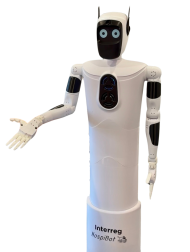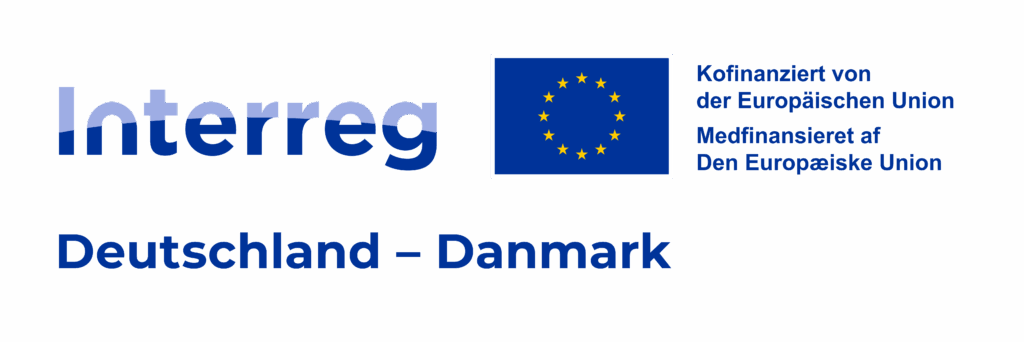HospiBot is a project funded by Interreg Deutschland-Danmark developing and researching robots for use in hospitals.
What exactly is Interreg? What are the specific objectives of HospiBot? This site provides you with background information on the project.

Funding
1.684.919 €
Duration
01.09.2023 - 31.08.2026
Lead Partner
Universität Süddänemark (SDU)
Interreg Deutschland - Danmark
Interreg is an initiative of the European Union to promote cooperation between neighboring regions and countries on internal EU borders. Interreg Germany – Denmark supports joint solutions to challenges and opportunities shared by northern Germany and southern Denmark.

Key areas in funding period 2021 - 2027
- An innovative region
- A green region
- An attractive region
- A functional region
The aim of the funding priority an innovative region is to strengthen innovation in Germany and Denmark. HospiBot contributes by meeting challenges in the Danish and German healthcare system with robotic innovation.
HospiBot's Goals
HospiBot is intended to relieve the workload on hospital staff. Focus is set on developing a prototype for a modular, interactive robot – quiet, stable, agile and safe. It is designed to perform typical, non-medical tasks in hospitals and interact with people in an intuitive way. HospiBot has set itself specific sub-goals along the way.
Mobile platform
The foundation of the project is a compact, mobile base platform, which can be completed with various robotic attachments to form a modular robot. The platform is specially designed for the requirements in hospitals, for narrow corridors and busy wards. It is the basis for a robot that can be used flexibly for different tasks – possibly during the day with a module for greeting visitors and at night with a module for recognizing emergency situations
Robotic modules serving different use cases
The project has identified use cases in which robots can offer real added value. Robotic modules that are compatible with the mobile robot platform are being developed in the project for three of these use cases:
- welcoming and orienting visitors
- night patrols to detect emergency and dangerous situations
- performing light transportation tasks
Intutitive user interface
HospiBot is researching the design and conception of a user interface that enables the most natural possible communication between humans and robots – through speech, eye contact and the screen. Low-barrier options are taken into account as well.
Practical testing of prototypes
Hospitals in southern Denmark and northern Germany are involved in HospiBot as project and test partners. The robot modules developed within the project will be tested in the identifies use cases and further refined – ranging from internal simulations to real-world operations with staff and patients.
Common guidelines
HospiBot contributes to a common guideline for the use of robots in the healthcare sector that is valid for both Germany and Denmark. Clear regulations create trust and can promote the acceptance of intelligent systems – ideally, they also reduce bureaucratic hurdles for hospitals.
Visibility to the public
HospiBot provides insights into the research conducted within the project and highlights its significance. Service robots are essential for the future of healthcare systems, yet they also raise numerous technical, ethical, and social questions. Through accessible information, media coverage, events, and dialogue formats, HospiBot helps make robotic innovations tangible, lowers barriers to acceptance, and showcases the potential of cross-border collaboration.
Such developments can only establish themselves in society in the long term if they are communicated and discussed collaboratively – and thus unfold their impact where it matters most: in practice.
Curious about what HospiBot has already achieved? See the project’s milestones!
